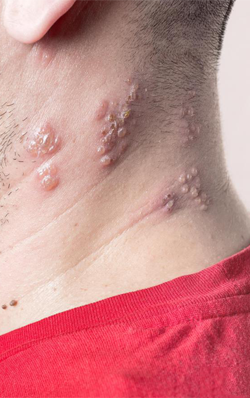
The term ‘slow virus disease’ is applied to a group of infections in human beings and animals, characterized by a very long incubation period and a slow but persistent course, terminating fatally.
The slow virus disease has the following characteristics:
1. Incubation periods ranging from months to years
2. Course of illness lasting for months or years, with spontaneous recovery and a sudden increase in the severity.
3. Increased affinity towards the involvement of central nervous system.
4. Absence of immune response
5. The immune response does not arrest the disease, but in turn contribute to the pathogenesis.
6. A genetic predisposition; increased susceptibility to infection due to genetic mutations
7. Invariable fatal termination
The disease may be classified into 3 groups:
1. Group A; slowly progressing infections of the sheep.
2. Group B; disease of the central nervous system (CNS)
3. Group C; consists of two unrelated CNS diseases of human beings.
Group A
1. A demyelinating disease of sheep; Visna.
2. Incubation period of 2 years.
3. The disease progresses to paralysis and death.
4. High levels of circulating antibodies can be detected.
5. CNS lesions may appear to represent an immune disease.
6. Maedi; progressive pneumonia, which is slowly progressing and hemorrhagic resulting in fatality.
7. Incubation period being 2-3 years.
Prion disease of animals
1. Scrapie is the preliminary form of the infectious disease.
2. It is the natural disease of the sheep
3. Transmission occurs from ewe (full grown female sheep) to lamb, and less often through contact.
4. Two years of incubation
5. The affected animals show increased irritability and scrapes against trees and rocks, hence the name scrapie.
6. Extreme weight loss and paralysis set in, leading to death.
7. Milk encephalopathy is a scrapie like disease of milk.
Human prion disease
The most important in this group is the Creutzfeldt- Jakob disease (CJD). The following are its features;
1. Sub- acute encephalopathy
2. Incoordination and long term loss of thinking ability lead to death in a year.
3. The disease may be sporadic or inherited.
4. People below 45 assumed to contract the disease by eating of infected beef.
Group B
1. Sub-acute disease of the brain
2. Chronic, progressive and degenerative disease.
3. Progressive cavity formation in the dendrites and axons
4. Grey matter becomes porous and cells get proliferated.
5. Signs of inflammation are not visualized.
Group C
1. Sub- acute sclerosing panencephalitis (SSPE) is a very rare delayed continuing infection with measles virus.
2. Disease sets in many years after the initial infection.
3. Mental and motor functions get deteriorated progressively.
4. Death may occur after 1- 3 years after the onset of symptoms
5. Patients show high levels of measles virus antibody in serum
6. Antibody is regularly found in CSF.
7. Progressive multifocal leucoencephalopathy (PMR) is a rare sub- acute demyelinating disease in elderly.
8. Occurs frequently in immunocompromised persons due to malignancy or immunosuppression.
9. Motor functions, vision and speech deteriorate gradually.
10. Death occurs in 3- 4 months.
11. Electron microscopy and brain biopsy culturing reveals the virus.





